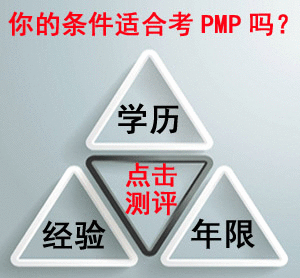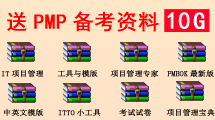11. All projects should be supportive of the performing organization’s long term goals. These types of goals are best describes as:
A. Operational
B. Tactical
C. Strategic
D. Bottom-Up
所有項(xiàng)目都應(yīng)該支持執(zhí)行組織的長(zhǎng)期目標(biāo)。對(duì)這種類型的目標(biāo)最貼切的描述是:
A. 運(yùn)作的
B. 戰(zhàn)術(shù)的
C. 戰(zhàn)略的
D. 自上而下的12. Within the five overlapping process groups of: initiating, planning, executing, controlling, and closing, which processes dominates in all project phases?
A. Initiating and Planning
B. Executing and Controlling
C. Planning and Controlling
D. They are all essential in each phase
在五個(gè)重疊的過程:?jiǎn)?dòng)、計(jì)劃、執(zhí)行、控制和收尾中,哪一項(xiàng)在項(xiàng)目階段中占主導(dǎo)地位?
A. 啟動(dòng)和計(jì)劃
B. 執(zhí)行和控制
C. 計(jì)劃和收尾
D. 都很重要
13. Why is it more difficult to determine when a change occurs on a project that is using a reimbursable type contract as compared to a lump-sum contract?
A. The detailed scope of work is not fully defined.
B. On reimbursable contracts, the contractors wants lots of changes.
C. The client usually creates the changes on a lump sum type contract.
D. The contractor determines if there are any changes to approve.
為什么報(bào)銷型合同比付款型合同更難確定項(xiàng)目何時(shí)發(fā)生變更?
A. 沒有充分定義詳細(xì)的工作范圍
B. 在報(bào)銷型合同中,承包商總是想要更多的變更
C. 客戶通常在一次性付款合同中提出變更
D. 承包商決定是否有任何變更需要批準(zhǔn)
14. When should a change request be documented?
A. The change is introduced into the normal workflow and the documentation is provided after the work is completed.
B. The work authorization is given upon the request of the client and documented at its occurrence.
C. Due to time constraints or the belief that it would be foolish to have to redo any additional work as a result of the change, the change is incorporated first and the documentation is prepared after the change is completed.
D. Client and contractor jointly document and approve the change before the work is scheduled.
什么時(shí)候要把變更申請(qǐng)寫成文檔?
A. 已經(jīng)把變更介紹到正常的工作流中,并且在工作完成后提交書面文檔
B. 在收到客戶的申請(qǐng)并得到工作授權(quán)后
C. 由于時(shí)間限制或者認(rèn)為變更的結(jié)果就是返工而且這么做是不明智的情況下,首先需要把變更集中起來,然后在變更完成之后再寫出文檔
D. 在工作被安排到進(jìn)度計(jì)劃中之前,客戶和承包商協(xié)商變更內(nèi)容
15. Changes are difficult and cumbersome to incorporate with the complex systems used by contractors. What is the reason for this difficulty?
A. The lack of detail available information concerning the tasks to be achieved on a contract.
B. It is difficult for the contractor to incorporate changes into a lump-sum type contract.
C. The contractor cannot account for re-work in their change control process.
D. Complex systems are conductive to the acceptance of changes.
將變更融于承包商復(fù)雜的系統(tǒng)中是困難和麻煩的。原因是:
A. 缺少關(guān)于要完成的項(xiàng)目任務(wù)的詳細(xì)信息
B. 對(duì)于承包商來說,把變更融入于一次性付款類型的合同中是很困難的
C. 承包商不能為他們?cè)谧兏刂七^程中的返工負(fù)責(zé)
D. 復(fù)雜的系統(tǒng)對(duì)于變更的驗(yàn)收是有益的
16. Why is it difficult for the project manager, regardless of the industry, to standardize their management at the top three levels of the Work Breakdown Structure?
A. The difference between projects.
B. Documents that authorized and assign work to performing organizations are designated by various names.
C. The contractors, without customers input, specifies the upper three levels of the WBS
D. Too many WBS levels of a project create difficulty in integration of the work activities.
無論什么行業(yè),為什么對(duì)于一個(gè)項(xiàng)目經(jīng)理來說,把工作分解結(jié)構(gòu)的最高三層進(jìn)行標(biāo)準(zhǔn)化管理是困難的?
A. 項(xiàng)目間的差異
B. 用來將工作授權(quán)和分配給執(zhí)行機(jī)構(gòu)的文檔有著各種各樣的名稱
C. 承包商在沒有客戶參與的情況下,明確了工作分解結(jié)構(gòu)的最高三層
D. 工作分解結(jié)構(gòu)的過多層次,會(huì)給整個(gè)工作活動(dòng)整合帶來難度
17. Each project phase is marked by completion of one or more:
A. tasks
B. milestones
C. deliverables
D. life cycles
每個(gè)項(xiàng)目的階段是以完成一個(gè)或者多個(gè)______ 為標(biāo)志。
A. 任務(wù)
B. 里程碑
C. 交付物
D. 生命周期
18. What is an example of project integration?
A. Accounting provides the cost estimate required for the help center’s contingency plan.
B. Developing a single task.
C. Determining what the cost is of a single functional task.
D. A functional manager determining what resource to use from his/her functional group.
下面哪個(gè)是項(xiàng)目整合的一個(gè)例子?
A. 為救助中心提供應(yīng)急計(jì)劃所需的成本估算的記賬體系
B. 制定一個(gè)單獨(dú)的任務(wù)
C. 確定一個(gè)單一功能任務(wù)的成本是多少
D. 職能部門的經(jīng)理確定從他/她的部門中使用哪些資源
19. When should senior management perform periodic project reviews?
A. Completion of a milestone.
B. Completion of each life cycle phase.
C. When one functional group completes their tasks.
D. When an activity interface point is reached.
高層管理在何時(shí)進(jìn)行階段性的項(xiàng)目檢查?
A. 完成一個(gè)里程碑時(shí)
B. 完成項(xiàng)目生命期的每個(gè)階段時(shí)
C. 當(dāng)一個(gè)職能團(tuán)隊(duì)完成他們的任務(wù)時(shí)
D. 在到達(dá)活動(dòng)的交界點(diǎn)時(shí)
20. Setting strategic project objectives are the responsibility of the:
A. project manager
B. function manager
C. executive or user groups
D. client
制定項(xiàng)目戰(zhàn)略目標(biāo)的責(zé)任歸屬
A. 項(xiàng)目經(jīng)理
B. 部門經(jīng)理
C. 執(zhí)行官或用戶集團(tuán)
D. 雇主
參考答案:
11-15 16-20
CDADA ACABC




